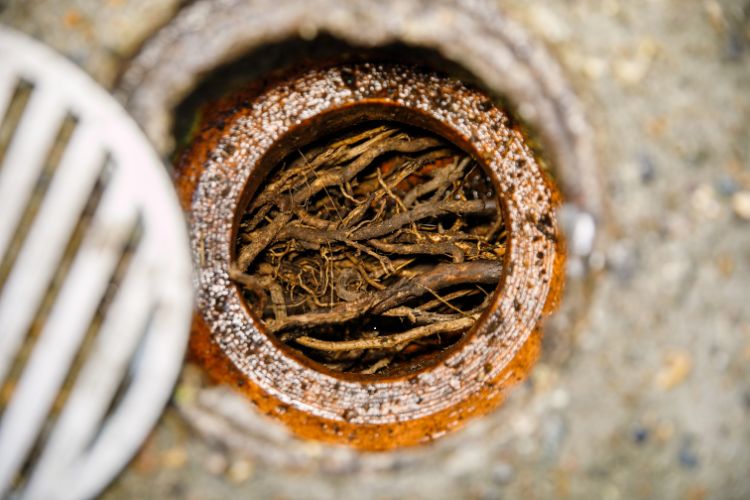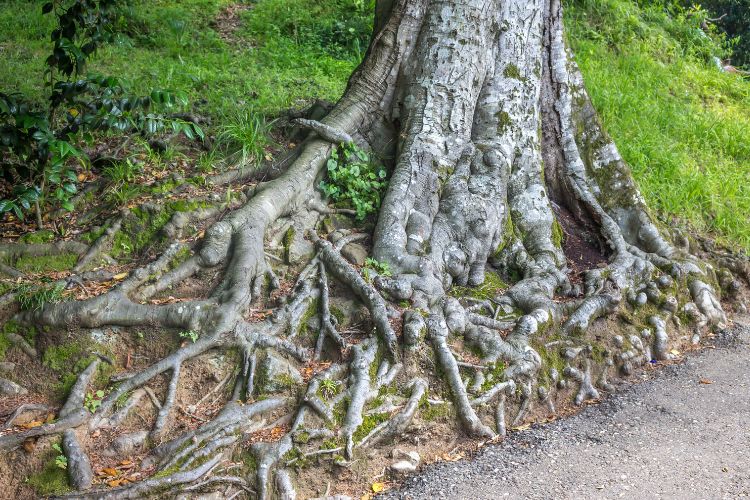
Open 24/7! Servicing all of Sydney’s Eastern Suburbs
Our Average Response time is: 1hr 53min 47sec
Tree roots are always searching for moisture making underground pipes an ideal target for them. That's why one of the most common issues we get called out for is tree root intrusion in homeowners' piping systems.
This intrusion causes blockages, leaks and, in worst-case scenarios, even major structural damage. So, if left unchecked, it can lead to costly repairs and frustrating plumbing issues. The trick is to tackle the intrusion before it can start to grow inside your piping.
Even the smallest crack or loose joint in a pipe can release vapour or water. This is like a callout to nearby roots and once they find an opening, they grow inside your pipes. Over time, the roots expand and before long you have a blocked pipe that can slow drainage or even cause pipe bursts.
If you live in an old home with pipes made from clay or concrete then they are especially vulnerable, but even modern PVC pipes aren’t immune to tree root intrusion, especially if they have weak connections.
So, how do you know if tree roots are causing trouble in your plumbing? There are a few key warning signs to watch for:
Tree root intrusion will only get worse if ignored. Trees love to grow, and the longer you let this occur inside your pipes, the more serious plumbing issues you will have over time. As the roots grow, they widen cracks and create major blockages, eventually causing pipes to completely burst.

If left unchecked, tree root intrusion can result in sewer backups, leading to foul odours from drains and potential health risks. Here's another incentive not to ignore it—the longer the problem goes unresolved, the more expensive the repairs become because what could have been a simple fix might turn into a full pipe replacement.
If you suspect tree roots in your pipes, there are a few ways to tackle the problems—some with DIY plumbing, while others require a professional.
Rock salt works by dehydrating tree roots when flushed down a toilet or drain in large amounts. As the salt absorbs moisture, it slowly shrinks and kills the roots without harming the tree. However, this method requires lots of rock salt repeated treatments and may take weeks to be effective.
Another DIY method is hydrojetting which uses high-pressure water to blast away blockages, although you have to access your pipes which you may require a plumber for.
If you don't mind getting your hands dirty, you can try using mechanical augers to cut through roots. However, it will be tough work and may only provide a temporary fix.
It's often easier and safer to get a pro in and have the job done properly and efficiently. A qualified plumber can carry out a video pipe inspection by inserting a miniature CCTV camera inside your pipe to pinpoint the extent of the damage. By doing so, they can then advise on the best and most cost-effective step forward.
Chances are they can fix the problem with trenchless pipe relining which repairs pipes without digging up your whole yard. However, full pipe replacement may be necessary for severe cases. Either way, if roots keep coming back, it’s time to call a plumber.
The best thing you can do is not to plant trees near sewer or water lines. If you’re landscaping, choose trees with non-invasive root systems that are less likely to seek out moisture in your pipes. A good landscape gardener or horticulturalist could advise on this. For already established trees, installing root barriers can help by directing roots away from underground plumbing. Most quality plumbers can do this for you.
We always stress that regular plumbing maintenance is the best prevention for any issues. Consider getting your trusted local plumber in to carry out video inspections to catch early signs of intrusion before they cause major damage. Lastly, if you’re replacing old pipes, opt for PVC or copper—not clay or concrete—they’re more resistant to root penetration. Consider pipe relining, which can provide a non-invasive solution to line the inside of your pipe to prevent further root intrusion and repair damage.
When planting near plumbing, you'll want trees with shallow and non-invasive roots to prevent damage to pipes. Again, ask your landscaper or horticulturist from your local nursery about this. Some of the best options include Japanese maple, dogwood, magnolia, redbud and birch.

Just remember, avoid planting too close to sewer lines and space out the plants wide enough so they're not competing to find water sources. And while you're at it, bury some root barriers.
In some situations, DIY solutions just won’t cut it. If you're dealing with complex plumbing issues like tree root invasions, it's time to call a professional plumber. Don’t wait until it’s too late—Contact Plumberoo today to address any concerns and protect your pipes.
Install root barriers and consider proper tree spacing for when tree roots grow. Regularly inspecting your plumbing offers the best protection.
Tree species with aggressive root systems, such as willows, gums, and oaks, can cause significant tree root obstruction and pipe damage to your plumbing system, including sewer pipes
A professional plumber can use a mini CCTV camera to inspect your pipes and a high-pressure water jet or a mechanical auger to remove tree roots obstructing drainpipes.
A plumber may use specialised equipment like a drain snake or hydrojetting to clear tree roots blocking your toilet.